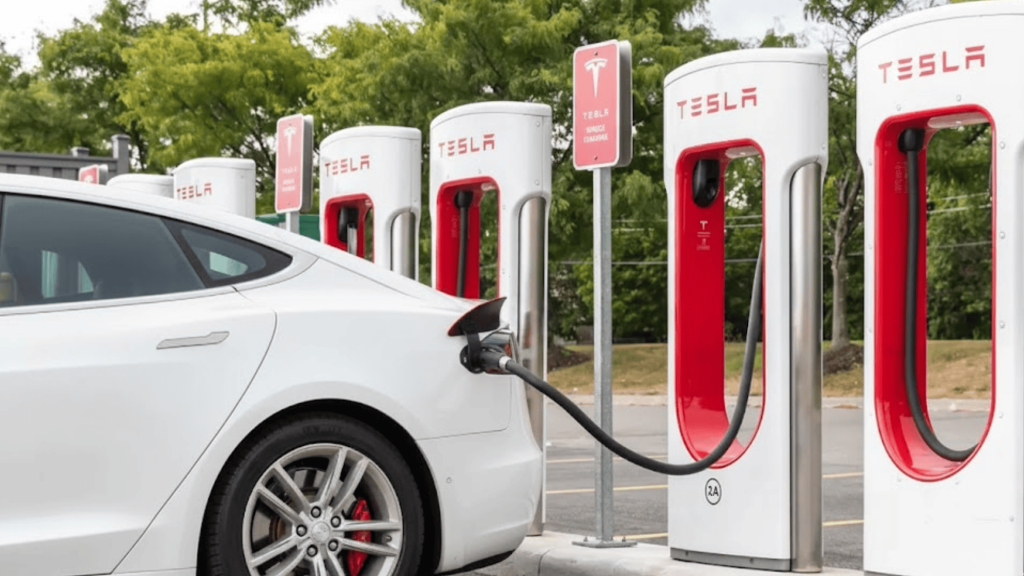What if you could skip the gas station and charge your car for free? Sounds too good to be true, right? Well, here’s some good news for electric vehicle (EV) owners: free charging stations are popping up all over the country, and finding them is easier than ever.
When I first got my electric vehicle, I thought I’d be spending a fortune on charging. But guess what? I discovered free charging stations at grocery stores, hotels, and even parks.
In this guide, I’m going to show you exactly where to find free EV charging stations, which apps make finding them super easy, and how to save serious money on charging costs.
If you’re brand new to electric vehicles or you’ve been driving one for years, you’ll learn practical tips that’ll keep more money in your wallet while helping the planet.
Are Charging Stations Free?
Let’s get straight to the point: Yes, some charging stations are completely free, but not all of them.
The electric vehicle charging world is a mix of free and paid options. Some places offer free charging as a perk, while others charge by the hour or by how much electricity you use.
The key is knowing where to look and how to spot the freebies.
Why Do Some Places Offer Free Charging?
Businesses and organizations offer free EV charging for several smart reasons:
- Attracting Customers: Stores like Target and Whole Foods know that EV drivers will shop longer while their car charges
- Marketing and Brand Image: Companies want to show they care about the environment
- Employee Benefits: Tech companies and modern offices use free charging to attract talented workers
- Government Incentives: Some cities get grants to install public chargers as part of green energy programs
- Customer Loyalty: Hotels and restaurants use free charging to stand out from competitors
How Much Does It Usually Cost to Charge an EV?
Before diving into free options, it helps to understand typical charging costs. Public EV charging usually costs between $0.30 and $0.60 per kilowatt-hour (kWh). Some stations charge by time instead, which can cost $1 to $3 per hour.
Let’s look at a real example: charging a Tesla Model 3 with a 57 kWh battery from empty to full would cost:
- At $0.40/kWh: About $23 for a full charge.
- At home (average $0.14/kWh): About $8 for a full charge.
Several factors affect how much you’ll pay:
- Type of charger (Level 1, 2, or 3).
- Your state’s electricity rates (Hawaii and California are pricier, while Louisiana and Washington are cheaper).
- Your vehicle’s battery size.
- Time of day (some places charge more during peak hours).
- Charging network fees (some require memberships).
Understanding Different Charger Types
| Charger Type | Charging Time | Average Cost | Best For |
|---|---|---|---|
| Level 1 | 8–12 hours | Free–Low | Home charging overnight |
| Level 2 | 4–6 hours | $0.30/kWh | Public stations, workplaces |
| Level 3 (DC Fast) | 30 min (to 80%) | $0.50–$0.60/kWh | Road trips, quick charges |
Level 1 chargers use a regular household outlet and are the slowest, but often free. Level 2 chargers are the most common at public stations and offer a good balance of speed and cost. Level 3 fast chargers are the quickest but usually cost more.
Where to Find FREE Charging Stations for Your EV
Finding free charging stations is easier than you might think. Here are the best places to look:
1. Retail Stores and Shopping Centers
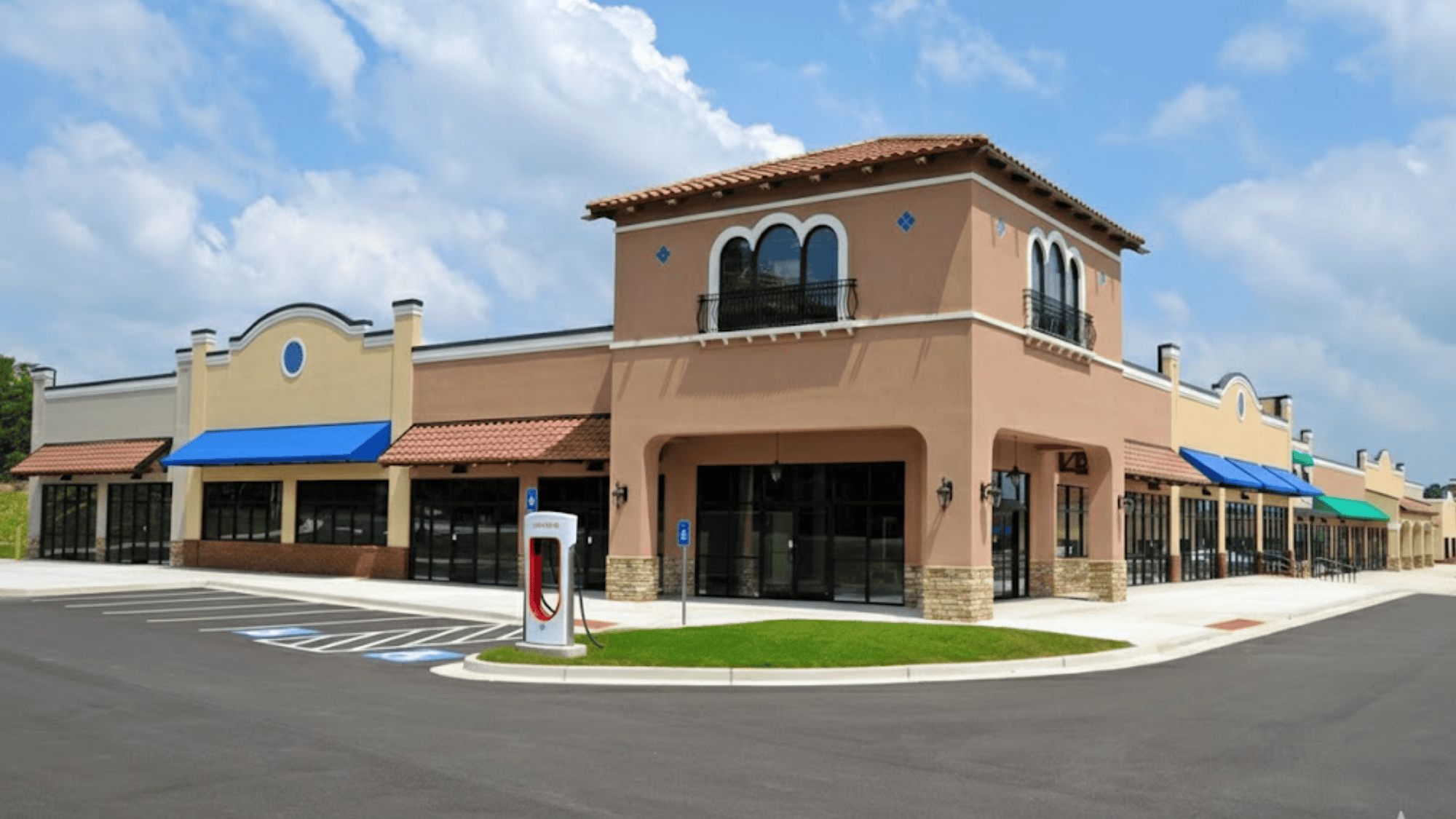
Many grocery stores and retail chains offer free Level 2 charging in their parking lots. The strategy is simple: you’ll shop longer while your car charges. Look for free chargers at:
- Whole Foods (many locations have ChargePoint stations)
- Target stores in select areas
- Some Walmart Supercenters
- IKEA (several locations offer free charging)
- Costco (limited locations)
2. College Campuses and Universities
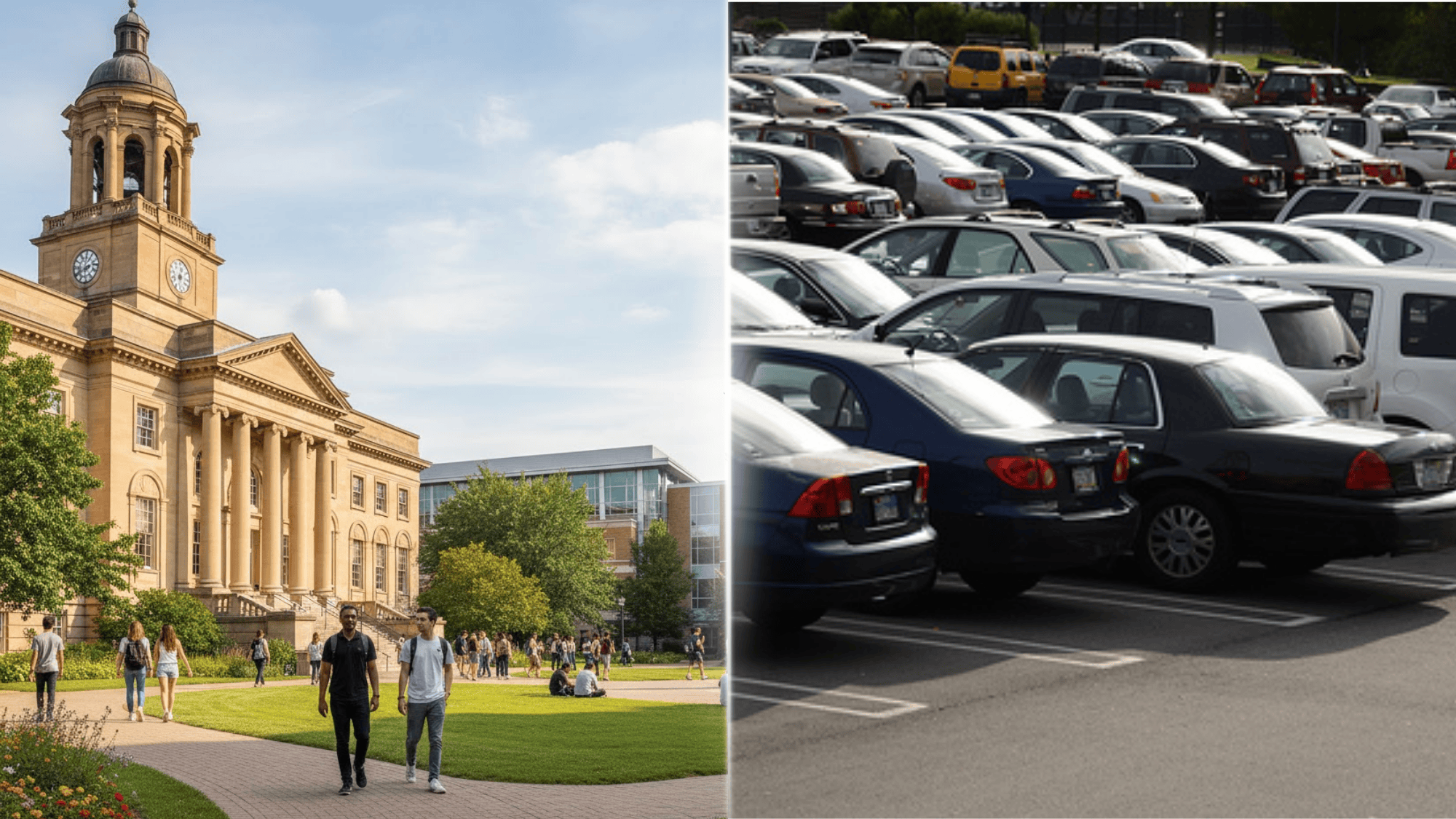
Educational institutions are leading the charge (pun intended) in sustainability initiatives and green campus programs.
Many universities offer free charging for students, staff, and sometimes visitors as part of their commitment to reducing carbon emissions and promoting clean transportation.
Campus charging stations are typically located in student parking lots, faculty areas, and visitor parking structures.
Check campus parking maps online or call the parking office directly to ask about availability, access requirements, and whether you need a parking permit to use the charging facilities.
3. Hotels and Resorts

Eco-friendly hotels and major chains increasingly offer free charging as a valuable guest perk to differentiate themselves in the competitive hospitality market.
Marriott, Hilton, Hyatt, and many boutique hotels actively advertise free EV charging to attract environmentally conscious travelers and business guests.
Some hotels charge nightly room fees but offer complimentary breakfast to make the stay more appealing and cost-effective.
When booking accommodations, always ask about EV charging availability, whether it’s complimentary, and if reservations are needed for charging spots to avoid any surprises upon arrival.
4. Car Dealerships
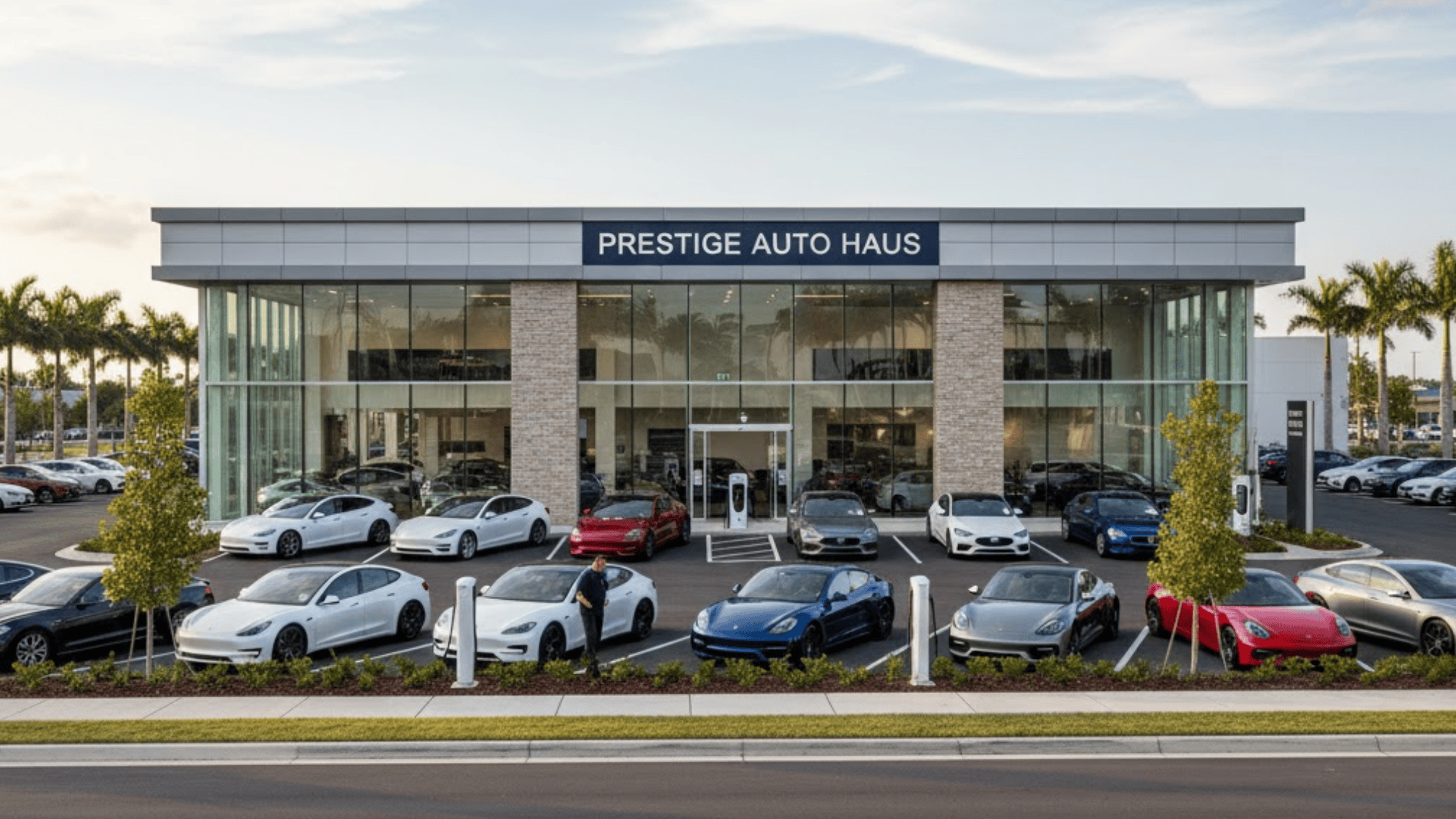
Dealerships selling electric vehicles often provide free charging to potential customers and owners:
- Nissan dealerships (especially for Leaf owners)
- Tesla Superchargers (free for some older Tesla models)
- Chevrolet dealers in some markets
- BMW and other luxury dealerships
5. Government Buildings and Public Spaces

Many city halls, public libraries, community centers, visitor centers, and municipal parking lots offer free charging to promote clean energy adoption and demonstrate government commitment to sustainability.
State and national parks are also starting to add chargers at visitor centers, popular trailheads, and recreational areas to support eco-tourism.
These publicly funded charging stations are often available 24/7 and don’t require memberships or special accounts.
Simply check your local government website or call the facilities department to find locations, confirm they’re operational, and understand any time limits or parking restrictions that may apply.
6. Special Events and Holidays
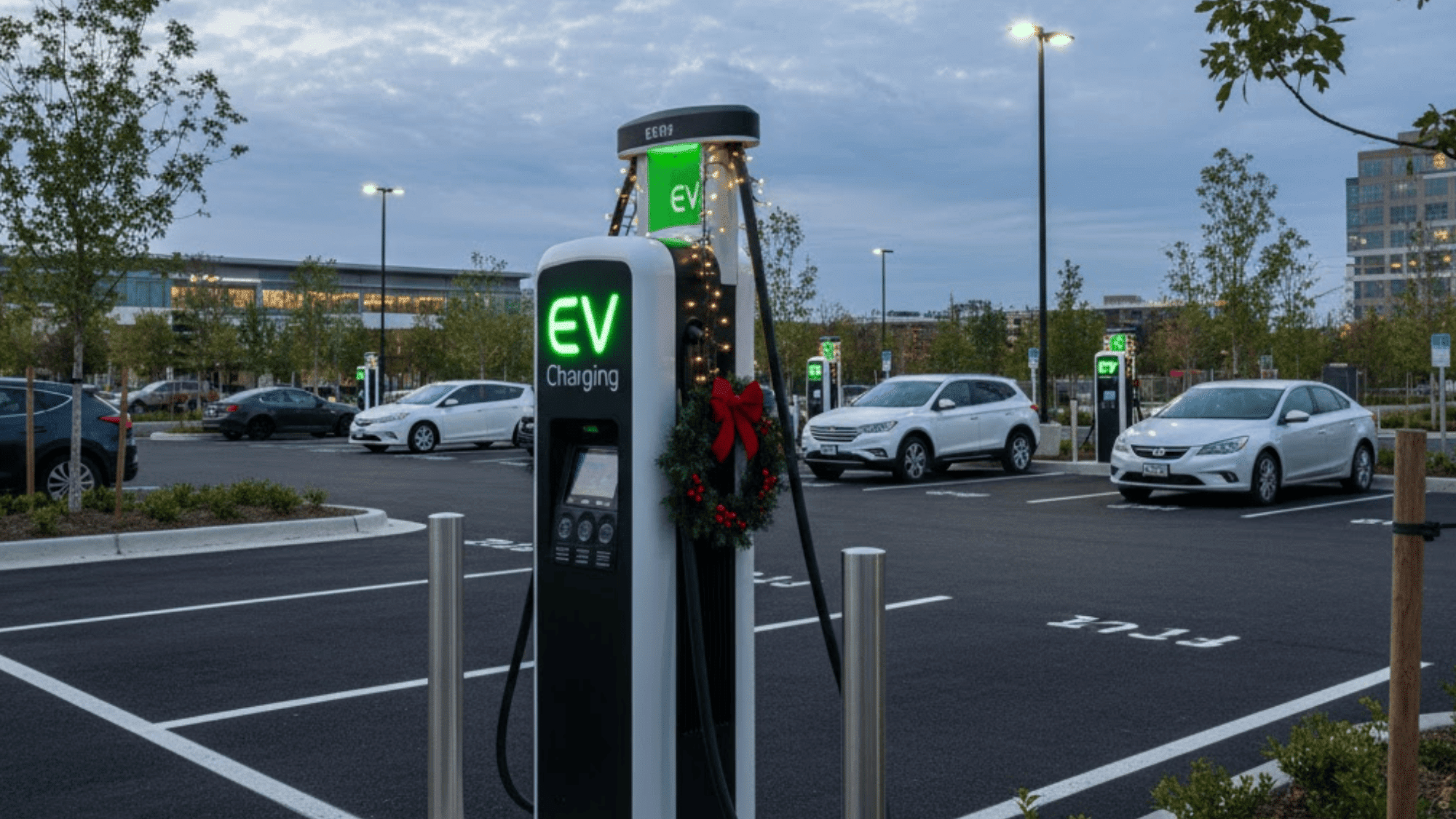
Keep an eye out for promotional free charging days. Tesla occasionally offers free Supercharging during holidays like Thanksgiving or Christmas.
Earth Day (April 22) often brings free charging promotions from various networks. Some charging companies run special deals during National Drive Electric Week each September.
7. Corporate and Employer Programs

Tech giants and progressive companies offer employee EV charging as a workplace benefit. Companies like Google, Amazon, Apple, and Microsoft provide free charging at their campuses.
If your company doesn’t offer this yet, ask HR about it – many businesses are looking for ways to attract employees with green benefits.
Best Apps to Locate Free EV Charging Stations
Finding free chargers used to mean driving around hoping to get lucky. Now, smartphone apps make it incredibly easy to filter results and show only free charging stations. Here are the top apps every EV driver should have:
| App Name | Description | Key Features |
|---|---|---|
| PlugShare | The most popular EV charging app with the largest global database. Let’s you filter by “free” stations, view real-time availability, and read driver reviews. | Filter by free chargers Real-time availability User reviews and photos |
| ChargePoint | One of North America’s largest charging networks. This app shows which stations are free, allows in-app payments, and tracks your charging sessions. | Free station indicators Start/stop charging from the app Earn rewards points |
| EVgo | Primarily a paid network, but it also helps locate free chargers. Includes rewards credits, session tracking, and waitlist notifications. | Find free chargers Rewards program Waitlist alerts |
| ChargeHub | Great for U.S. and Canadian drivers. Community-verified updates ensure stations marked “free” truly are. | Verified free stations Trip-planning tools Easy-to-use interface |
| EVHotels | Perfect for travelers. Lists hotels with built-in EV chargers and allows filtering by free guest charging. | Hotel charging info Free guest filter Ideal for road trips |
Other Clever Ways to Charge Your EV for Free
Beyond finding free public stations, there are several strategies to reduce or eliminate charging costs:
1. Join Loyalty and Rewards Programs
Many charging networks offer loyalty programs that provide free credits:
- Blink Charging rewards members with points for each charge
- ChargePoint offers a rewards program with credits
- EVgo has a subscription plan where you earn bonus credits
- Some credit cards give cashback on EV charging purchases
2. Take Advantage of Public Grants and Rebates
Several states offer comprehensive programs that include free or discounted charging as part of renewable energy initiatives and clean transportation goals.
California, New York, and Colorado have various programs supporting EV adoption through rebates, grants, and charging credits.
These programs often provide vouchers for free public charging sessions or reduced rates at participating stations.
Check your state’s energy department website regularly for current offerings and eligibility requirements to maximize available benefits.
3. Install Solar Panels at Home
While there’s an upfront cost ranging from $15,000 to $25,000, solar panels eventually provide completely free electricity for your home and car charging needs.
Many EV owners pair solar installation with home charging equipment, creating a completely free and sustainable charging solution that eliminates monthly electricity bills.
The average residential solar system pays for itself in 6-10 years through energy savings, and federal tax credits cover up to 30% of installation costs, making it an increasingly attractive long-term investment.
4. Charge During Off-Peak Hours
Some utility companies offer time-of-use rates where electricity costs significantly less during off-peak hours, usually late night to early morning, between 9 PM and 7 AM.
While not technically free, you could save 40-60% compared to peak daytime rates by simply charging overnight while sleeping.
Many utilities also offer special EV rate plans with even deeper discounts during super off-peak periods.
Check with your local utility provider about available time-of-use programs and consider setting your vehicle’s charging timer to automatically start during the cheapest hours.
5. Ask Your Workplace
Many employers don’t realize their employees want EV charging or understand the benefits of providing this workplace amenity for recruitment and retention.
Asking HR or management about installing workplace chargers could benefit everyone and position your company as environmentally progressive.
Some companies can get federal tax credits covering up to 30% of installation costs for installing charging stations, making it a win-win situation financially.
Present the business case, including employee satisfaction, talent attraction, sustainability goals, and available incentives to increase the likelihood of approval and implementation.
Should You Install a Home EV Charger?
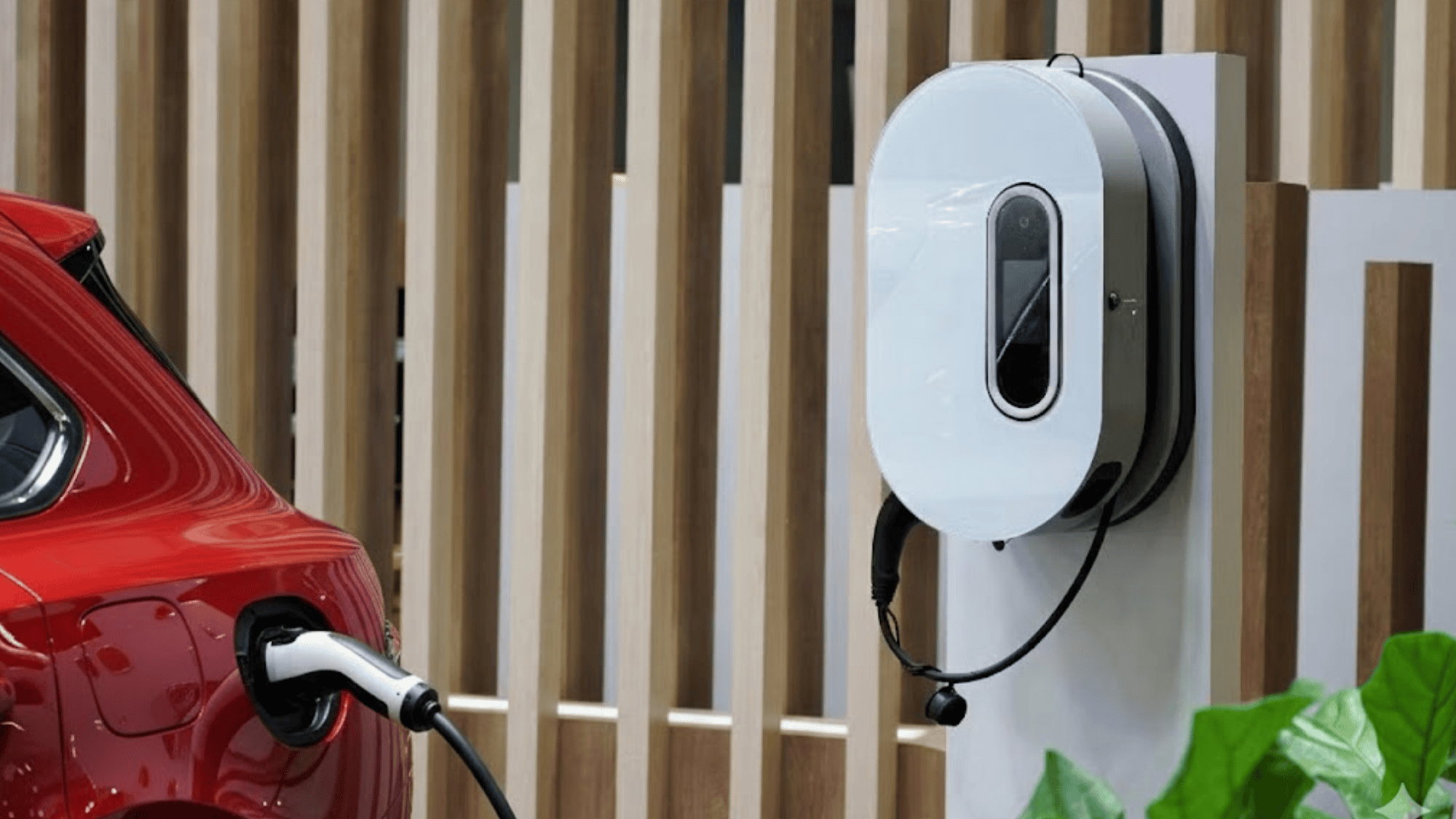
For many EV owners, installing a Level 2 home charger is the best long-term investment. Here’s why:
Benefits of Home Charging:
- Ultimate convenience; charge overnight while you sleep
- Lower electricity costs compared to public charging
- No waiting for available public chargers
- Increased home value (EV chargers are attractive to buyers)
- Protected from rate increases at public stations
Cost Considerations:
A Level 2 home charger costs $500-$2,000 for the equipment, plus $500-$2,000 for professional installation. However, federal tax credits can cover up to 30% of installation costs (up to $1,000).
Many states and utilities offer additional rebates that can reduce costs by another $250-$500.
Over 2-3 years, home charging typically saves $500-$1,500 compared to using only public stations. If you own your home and plan to keep your EV for several years, a home charger pays for itself.
For renters, talk to your landlord about installing a charger or look for apartment complexes advertising EV charging as an amenity.
Saving Even More: EV Charging Hacks
Want to maximize your EV’s efficiency and reduce how often you need to charge? Try these tips:
- Drive Efficiently: Rapid acceleration drains the battery fast. Smooth, consistent driving can extend your range by 10-20%. Use cruise control on highways to maintain steady speeds.
- Use Regenerative Braking: Most EVs convert braking energy back into battery power. Learn to anticipate stops and coast more, letting regenerative braking recharge your battery instead of using friction brakes.
- Plan Routes Smartly: Combine errands into single trips and plan routes that pass by free charging stations. Apps like A Better Route Planner help map efficient routes with charging stops.
- Precondition Your Battery: Heat or cool your car while it’s still plugged in. This uses grid electricity instead of battery power, extending your driving range.
- Monitor Tire Pressure: Underinflated tires reduce efficiency. Keep tires properly inflated to maximize range and reduce charging frequency.
Future of Free EV Charging
The future looks bright for free EV charging access. Here’s what’s coming:
The federal government committed billions to building 500,000 public charging stations by 2030. Many of these will be free or low-cost, especially in underserved communities.
Major automakers are partnering with retailers to install charging networks. Ford and General Motors are working with companies like Starbucks and major grocery chains to add thousands of charging stations.
More cities are installing free curbside charging to support residents without home charging options. EV-friendly states like California, New York, Texas, Colorado, and Washington are leading this expansion.
Future incentives for green energy users will likely include continued tax credits, free charging periods, and reduced electricity rates for EV owners.
Wrapping It Up
I hope this guide has opened your eyes to just how many free charging options are out there. From shopping centers to college campuses, the opportunities to charge without spending a dime are growing every single day.
I’ve shown you the best apps to download, the smartest money-saving tricks, and where to look for those hidden free chargers in your community.
The EV charging world is changing fast, and it’s only getting better for drivers like us. With new stations appearing weekly and more businesses offering free charging, now is the best time to own an electric vehicle.
Ready to start saving? Download any of the above-mentioned apps today, find your nearest free charging station, and take that first step toward charging smarter. Your next free charge is waiting!

